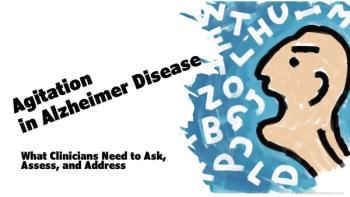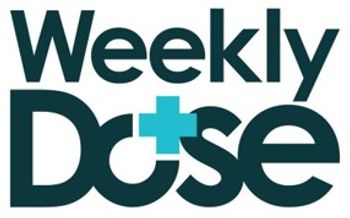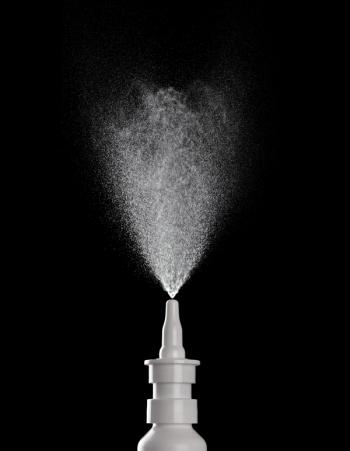
Hormone Replacement Therapy After the WHI: Clinician’s Evidence Timeline (2002–2025)
The comprehensive timeline highlights how WHI findings and subsequent research reshaped HRT risk assessment, guidance, and FDA labeling through 2025.
The Women’s Health Initiative (WHI)
Launched in 1991, the Women’s Health Initiative (WHI) was a large, federally funded research program designed to address the leading causes of morbidity and mortality among postmenopausal women, including cardiovascular disease, cancer, and osteoporosis. The WHI included randomized controlled trials and an observational study involving more than 160,000 participants aged 50–79 years.1
Studies of hormone replacement therapy (HRT) were incorporated to evaluate whether estrogen alone or estrogen plus progestin could prevent chronic disease and improve long-term health outcomes after menopause. At the time, HRT was widely prescribed for both symptom management and presumed cardioprotection. The hormone therapy trials were intended to test those assumptions rigorously in a randomized setting.1
Timeline
1993 — WHI study begins
The WHI officially launched, enrolling postmenopausal women to test strategies for preventing heart disease, cancer, and osteoporosis, including hormone therapy interventions.1
July 9, 2002 — WHI combined estrogen+progestin trial halted early
The WHI Data and Safety Monitoring Board stopped the combined estrogen + medroxyprogesterone acetate trial because risks (invasive breast cancer, cardiovascular events) outweighed benefits for the enrolled cohort of women aged 50–79.2
2002 (summer–fall) — Principal WHI results published and widely reported
Results showed an increased risk of coronary heart disease, stroke, venous thromboembolism, and breast cancer in the combined hormone group; the estrogen-alone substudy later reported different risk profiles.3,4 High-profile publications and media coverage led to a rapid decline in HRT prescribing.5
2003 — Classwide labeling revisions and boxed warning statements applied
Following WHI, the FDA and manufacturers updated labeling for systemic and many local estrogen/progestogen products. Boxed warnings were added to many products citing cardiovascular disease, breast cancer, thromboembolism, and possible dementia.6,7
2003–2010s — Clinical practice, prescribing patterns, and re-examination
HRT use fell sharply after WHI.8 Researchers refined understanding of risk by age, type of hormone, dose, and route. The “timing” or “window” hypothesis emerged: women closer to menopause initiation have different benefit–risk profiles than those initiating therapy later.9,10
2009–2017 — Subsequent analyses and society guidance
Long-term WHI follow-ups and other studies clarified risks by formulation, dose, and timing.11 Specialty societies, including The North American Menopause Society (NAMS), updated position statements emphasizing individualized risk-benefit counseling and effectiveness of HRT for vasomotor symptoms.12
2010s–early 2020s — Evidence for differentiated risk by formulation and indication
Research distinguished systemic (oral/patch) versus local (vaginal) preparations and lower-dose/regional delivery forms with limited systemic absorption.13 Updated analyses on cardiovascular and dementia risk for younger, recently menopausal women prompted calls to revise labeling.14
July 17, 2025 — FDA expert panel discussion on menopause and HRT
The FDA convened a public expert panel to review evidence on hormone therapies and label language, contributing input for upcoming regulatory changes.15
Nov 10, 2025 — HHS/FDA announce removal of boxed warnings
HHS and FDA announced steps to remove or revise boxed warnings and is working with manufacturers to "update language in product labeling to remove references to risks of cardiovascular disease, breast cancer, and probable dementia. The FDA is not seeking to remove the boxed warning for endometrial cancer for systemic estrogen-alone products.
Nov 10, 2025 — American College of Obstetricians & Gynecologists responds
ACOG president says label change on estrogen will increase access to hormone therapy
https://www.acog.org/news/news-releases/2025/11/acog-president-says-label-change-on-estrogen-will-increase-access-to-hormone-therapy
Nov 12, 2025 — Women's Health Initiative responds
WHI responds to FDA removal of black box warning on hormonal therapies
https://www.whi.org/md/news/whi-fda-hrt-warning
References
- NHLBI. Women’s Health Initiative: study overview. 1993.
- Sibbald B. US estrogen plus progestin HRT trial stopped due to increased risk of breast cancer, stroke and heart attack. CMAJ. 2002;167(3):294.
- Rossouw JE, Anderson GL, Prentice RL, et al. Risks and benefits of estrogen plus progestin in healthy postmenopausal women: principal results from the Women’s Health Initiative randomized controlled trial. JAMA. 2002;288(3):321–333. doi:10.1001/jama.288.3.321
- The Women’s Health Initiative Screening Committee. Effects of Conjugated Equine Estrogen in Postmenopausal Women With Hysterectomy: The Women's Health Initiative Randomized Controlled Trial: the Women’s Health Initiative randomized trial. JAMA. 2004;291(14):1701–1712. doi:10.1001/jama.291.14.1701
- Hersh AL, Stefanick ML, Stafford RS. National use of postmenopausal hormone therapy: annual trends and response to recent evidence. JAMA. 2004;291(1):47–53. doi:10.1001/jama.291.1.47
- Stephenson J. FDA. FDA orders estrogen safety warnings: agency offers guidance for HRT use. JAMA. 2003;289(5):537-8. doi: 10.1001/jama.289.5.537.
- North American Menopause Society. Estrogen and progestogen use in peri- and postmenopausal women: September 2003 position statement of The North American Menopause Society. Menopause. 2003;10(6):497-506. doi: 10.1097/01.gme.0000102909.93629.8b.
- Chlebowski RT, Hendrix SL, Langer RD, et al. Influence of estrogen plus progestin on breast cancer and mammography in postmenopausal women. JAMA. 2003;289(24):3243–3253. doi:10.1001/jama.289.24.3243.
- Manson JE, Chlebowski RT, Stefanick ML, et al. Menopausal hormone therapy and health outcomes during the intervention and extended poststopping phases of the Women’s Health Initiative randomized trials. JAMA. 2013;310(13):1353–1368. doi: 10.1001/jama.2013.278040
- Clarkson TB, Meléndez G, Appt SE. Timing hypothesis for postmenopausal hormone therapy: its origin, current status, and future. Menopause. 2013;20(3):342‑353. doi: 10.1097/gme.0b013e3182843aad
- Shufelt CL, Bairey Merz CN, Ross L, et al. Hormone therapy dose, formulation, route of delivery, and risk of cardiovascular events in women: findings from the Women’s Health Initiative Observational Study. Menopause. 2014;21(3):260‑266.
- The North American Menopause Society. The 2017 hormone therapy position statement of The North American Menopause Society. Menopause. 2017;24(7):728–753.
- Goldštajn MS, Mikuš M, Ferrari FA, et al. Effects of transdermal versus oral hormone replacement therapy in postmenopause: a systematic review. Arch Gynecol Obstet. 2022 Jun 17;307(6):1727–1745. doi: 10.1007/s00404-022-06647-5
- Oliver‑Williams C, Glisic M, Shahzad S, et al. The route of administration, timing, duration and dose of postmenopausal hormone therapy and cardiovascular outcomes in women: a systematic review. Hum Reprod Update. 2019;25(2):257‑271. doi: 10.1093/humupd/dmy039.
- FDA expert panel on menopause and hormone replacement therapy for women. Panel Discussion. US Food and Drug Administration.July 17, 2025. Accessed November 14, 2025.
https://www.youtube.com/live/_2ZRlOivC5M . - HHS advances women’s health, removes misleading FDA warnings on hormone replacement therapy. News release. US Department of Health and Human Services. November 10, 2025.
https://www.hhs.gov/press-room/hhs-advances-womens-health-removes-misleading-fda-warnings-hormone-replacement-therapy.html . Accessed November 10, 2025.
Newsletter
Enhance your clinical practice with the Patient Care newsletter, offering the latest evidence-based guidelines, diagnostic insights, and treatment strategies for primary care physicians.
































































































































































































































































































